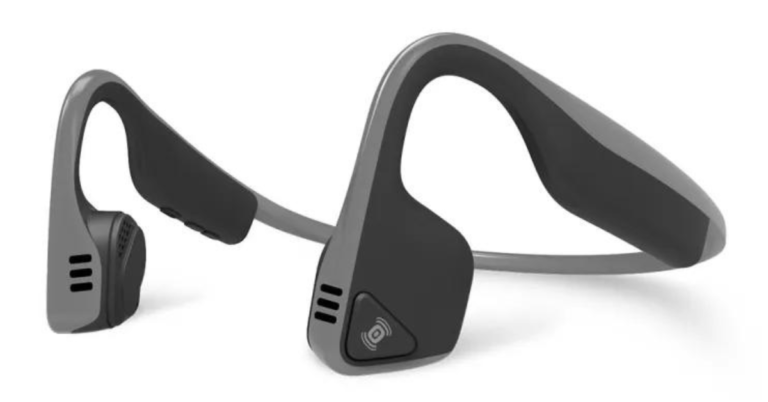Are bone conduction headphones safe? the truth

Bone conduction headphones are getting more popular because they work differently from other types of headphones. Instead of covering your ears, they send sound through the bones in your head, letting you hear music while still hearing what’s around you. This makes them great for people who need to stay aware, like runners or bikers.
But the question is, Are Bone conduction headphones safe? The short answer is yes, as long as you use them properly. Like any headphones, playing music too loudly for too long can still cause hearing problems.
This article will explain how these headphones work, why they can be good for you, and what you need to watch out for. By the end, you’ll know if bone conduction headphones are a good choice for you.
Table of Contents
Are Bone Conduction Headphones Safe?
Bone conduction headphones work differently from normal headphones. Instead of sending sound through your ear, they send vibrations through the bones in your head, straight to the inner part of your ear, called the cochlea.
This means they don’t block your ear canal, so they let you hear what’s happening around you. This can be helpful for people like runners or bikers who need to stay aware of traffic or other sounds while listening to music.
However, even though these headphones are safer in some ways, you still have to be careful. If you listen to music at a very high volume for a long time, it can hurt your hearing. The sound still goes to your inner ear, so playing it too loud can damage it, just like with regular headphones. So, it’s important to keep the volume at a safe level.
How Bone Conduction Technology Works
Bone conduction headphones use a special type of technology that sends sound through vibrations. Here’s how it works: tiny parts inside the headphones, called transducers, vibrate the bones in your head. These vibrations go straight to the inner ear, which is the part of your ear that actually “hears” the sound.
This technology is different because it skips over the outer and middle parts of your ear. So, instead of sending sound through your ear canal (like normal headphones do), it sends sound through your bones!
One big benefit of this is that you can hear music while also staying aware of what’s happening around you. This is very helpful if you’re outside running, biking, or walking, and you need to hear traffic or people talking.
However, bone conduction headphones don’t have the best sound quality, especially in loud places. Because they don’t block your ears, outside noise can mix with the music, which might make it harder to hear the details of your music clearly.
This makes them great for some situations, but not always the best if you’re in a noisy environment or want top-quality sound.
Are Bone Conduction Headphones Better Than Traditional Headphones?
Bone conduction headphones have some unique advantages compared to regular, traditional headphones:
- Situational Awareness: Unlike traditional headphones that block out most sounds, bone conduction headphones let you hear what’s happening around you while listening to music. This is great if you’re outside walking, running, or biking because it helps you stay aware of things like traffic or people around you, making them safer.
- Comfort: Because bone conduction headphones don’t go inside your ears or cover them, they can be more comfortable, especially if you wear them for a long time. There’s no ear pressure or discomfort like you might feel with regular earbuds or over-ear headphones.
- Help for People with Hearing Problems: These headphones are also helpful for some people who have hearing problems, especially if the problem is with their eardrums. Since bone conduction headphones send sound through the bones in your head and not through your ear canal, they can help people who can’t hear well through regular headphones.
Remember, bone conduction headphones have some downsides:
- Sound Quality: Traditional headphones usually give better sound quality, especially when it comes to hearing all the small details in your music, like the highs and lows. Bone conduction headphones can sometimes sound muffled or less clear, especially in noisy places.
So, bone conduction headphones are better in certain situations where you need awareness of your surroundings or if you find regular headphones uncomfortable. But if you’re looking for top-quality sound, especially in quiet environments, traditional headphones might be the better choice.
Potential Risks and Drawbacks
Even though bone conduction headphones are generally considered safe, there are a few risks you should know about:
- Hearing Loss: Even though these headphones don’t go into your ears, they can still cause hearing damage. The sound vibrations go straight to your inner ear, and if you play music too loudly for too long, it can harm the cochlea (the part of the ear that helps you hear). This could lead to something called noise-induced hearing loss (NIHL), which is when loud noises damage your hearing over time.
- Tinnitus: Tinnitus is a ringing or buzzing sound in your ears that doesn’t go away. Listening to music at high volumes, even with bone conduction headphones, can make this problem worse or even cause it in some cases. It’s important to keep the volume at a safe level to avoid this.
- Sound Leakage: Bone conduction headphones don’t seal off your ears, so sound can leak out. This means other people around you might hear what you’re listening to, especially if you’re in a quiet place. This might not bother you in noisy environments, but in a quiet setting, it could be a problem for both you and the people around you.
Understanding these risks will help you use bone conduction headphones safely and make sure you get the best experience without harming your hearing.
Are Bone Conduction Headphones Right for You?
Bone conduction headphones are a great option for some people, due to the reasons below:
- Outdoor Exercisers: If you enjoy running, cycling, or walking outside, these headphones allow you to hear your music or podcasts while also staying aware of important sounds, like cars or people nearby. This makes them safer for outdoor activities because you won’t be completely cut off from your surroundings.
- Swimmers: Some models of bone conduction headphones are waterproof, which means you can use them while swimming. They allow you to enjoy music even underwater, which is something traditional headphones can’t do.
- People with Hearing Loss: If you have specific types of hearing loss that affect your outer or middle ear, bone conduction headphones might be a great solution. Since they send sound through your bones to your inner ear, they bypass the damaged parts of the ear, making it easier for some people with hearing problems to hear sound more clearly.
However, if sound quality is the most important thing to you, or if you often listen to music in noisy environments, traditional headphones might be a better choice. Bone conduction headphones don’t offer the same high-quality sound as regular headphones, especially when it comes to hearing all the details in your music.
In short, bone conduction headphones are perfect for people who need to stay aware of their surroundings or have hearing difficulties. But if you’re all about sound quality or work in a noisy place, you might prefer regular headphones.
Bone Conduction Headphones Safety Tips for Using
To protect your hearing and get the best experience, here are some important safety tips for using bone conduction headphones:
- Keep the Volume Moderate: Always keep the volume at a safe level. Experts recommend keeping the volume below 70% of the maximum to protect your hearing. Even though these headphones work differently from regular ones, high volumes can still damage your inner ear if used for too long.
- Take Breaks: Listening to any type of headphones for a long time, even at lower volumes, can still cause ear strain. To avoid this, take regular breaks. This gives your ears a rest and reduces the risk of hearing problems over time.
- Use in Appropriate Settings: Bone conduction headphones are safe and great for outdoor activities because they allow you to hear what’s going on around you. However, they may not work well in very noisy places because they don’t block outside noise. If you’re in a loud environment and need to focus on your music, traditional noise-canceling headphones might be a better choice.
Conclusion
In summary, bone conduction headphones safe to use and offer many unique benefits, especially for people who need to stay aware of their surroundings while listening to music. They are great for athletes, outdoor enthusiasts, and people with certain types of hearing loss.
However, like any other headphones, it’s important to use them responsibly. To avoid hearing damage, keep the volume at a safe level and take regular breaks to give your ears a rest.
Overall, bone conduction headphones are ideal for specific users who need a combination of safety and convenience. However, if you’re someone who cares a lot about having the best sound quality, traditional headphones might still be a better option for you.
FAQs
Do bone conduction headphones have side effects?
Yes, bone conduction headphones can have side effects like hearing loss or tinnitus if used at high volumes for long periods. Some people also experience discomfort from the vibrations on their bones.
Can a deaf person hear with bone conduction headphones?
It depends on the type of hearing loss. People who have damage in the outer or middle ear but a functioning inner ear (cochlea) can often hear with bone conduction headphones, as the sound bypasses the damaged parts.
Can bone conduction headphones cause tinnitus?
Yes, if used at high volumes, bone conduction headphones can contribute to tinnitus (ringing in the ears), just like regular headphones.
Can you get hearing damage from bone conduction?
Yes, listening to music at very high volumes through bone conduction headphones can still damage your hearing by overstimulating the inner ear.
Why can other people hear my bone conduction headphones?
Bone conduction headphones can leak sound because they don’t completely block the ears, and the vibrations can create noise that others nearby might hear.
Why do people wear bone conduction headphones?
People wear bone conduction headphones because they allow them to listen to music while still hearing their surroundings. This is useful for safety reasons, especially when exercising outdoors.
Who needs bone conduction headphones?
Bone conduction headphones are great for outdoor athletes, people with certain types of hearing loss, and anyone who needs to hear what’s happening around them while still enjoying audio.






